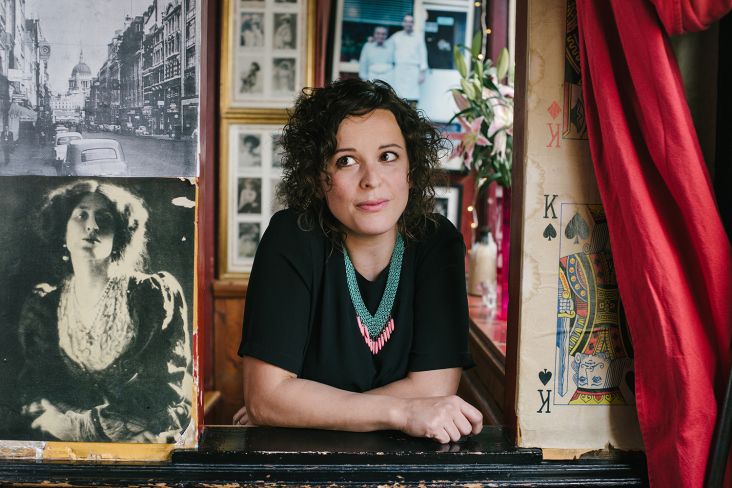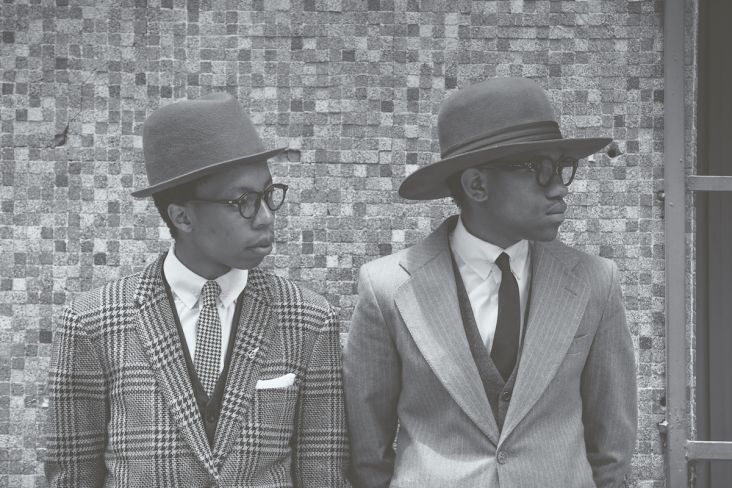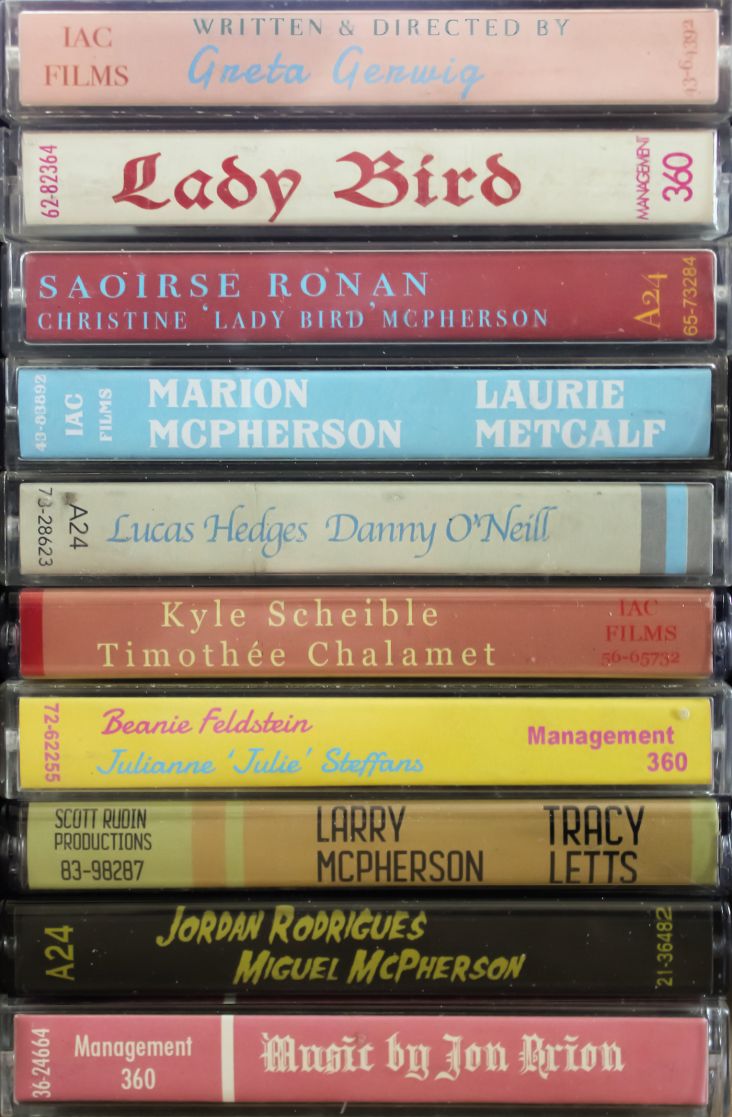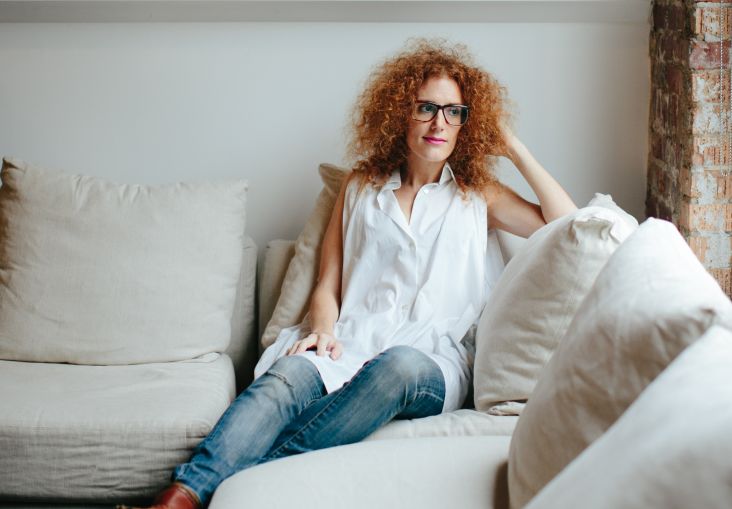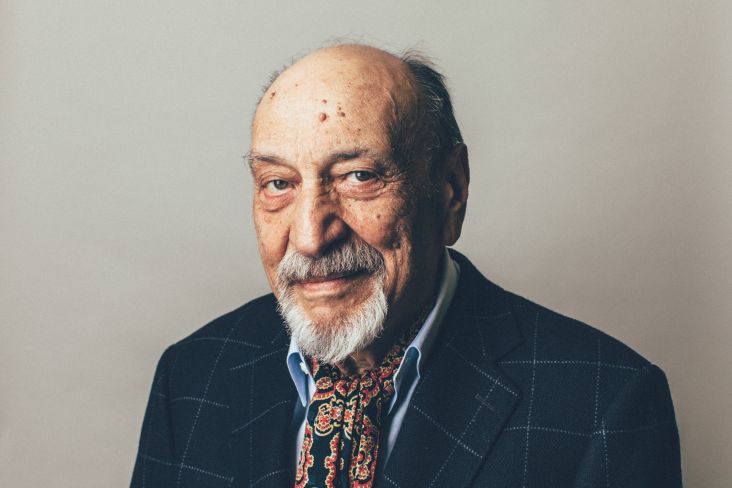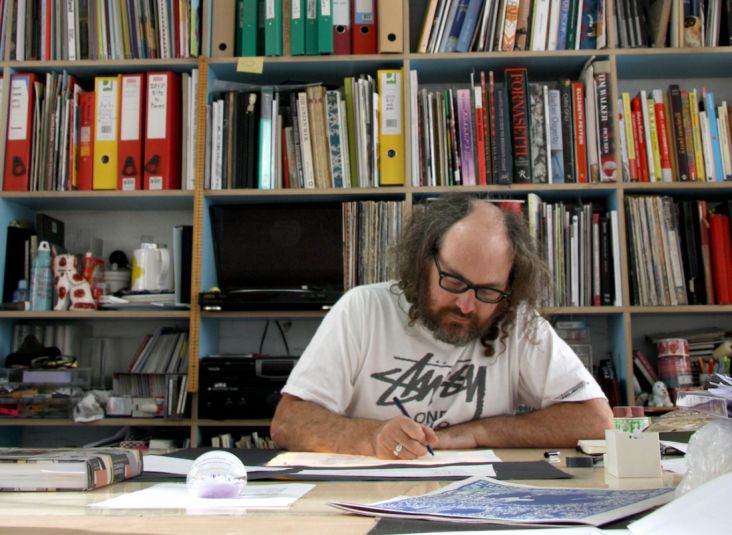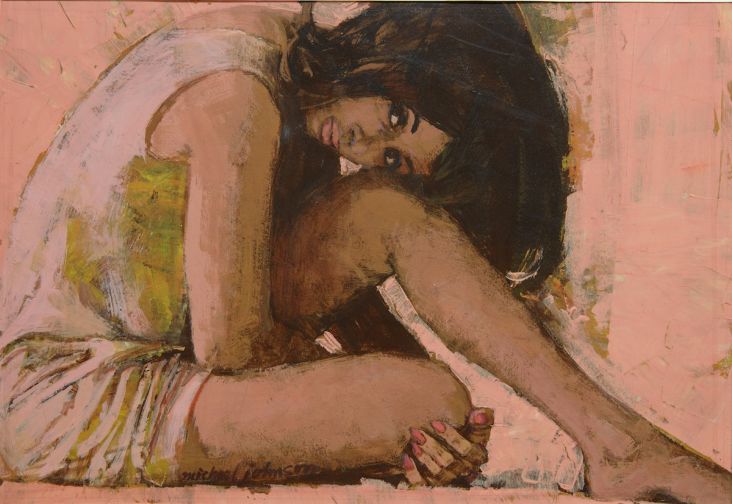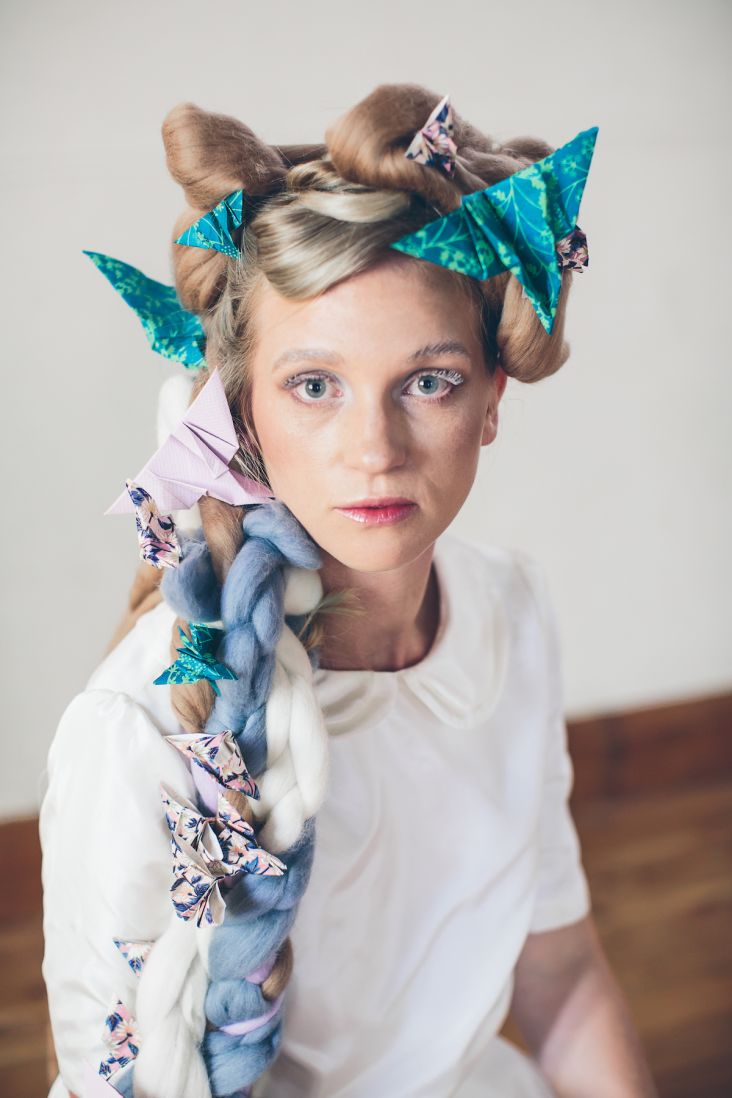Benji Davies on The Grotlyn, the magic of storytelling and the fun of making children's books
An illustrator and animation director by trade, Benji Davies has also made a name for himself in recent years by becoming an award-winning author, publishing his own children's books.
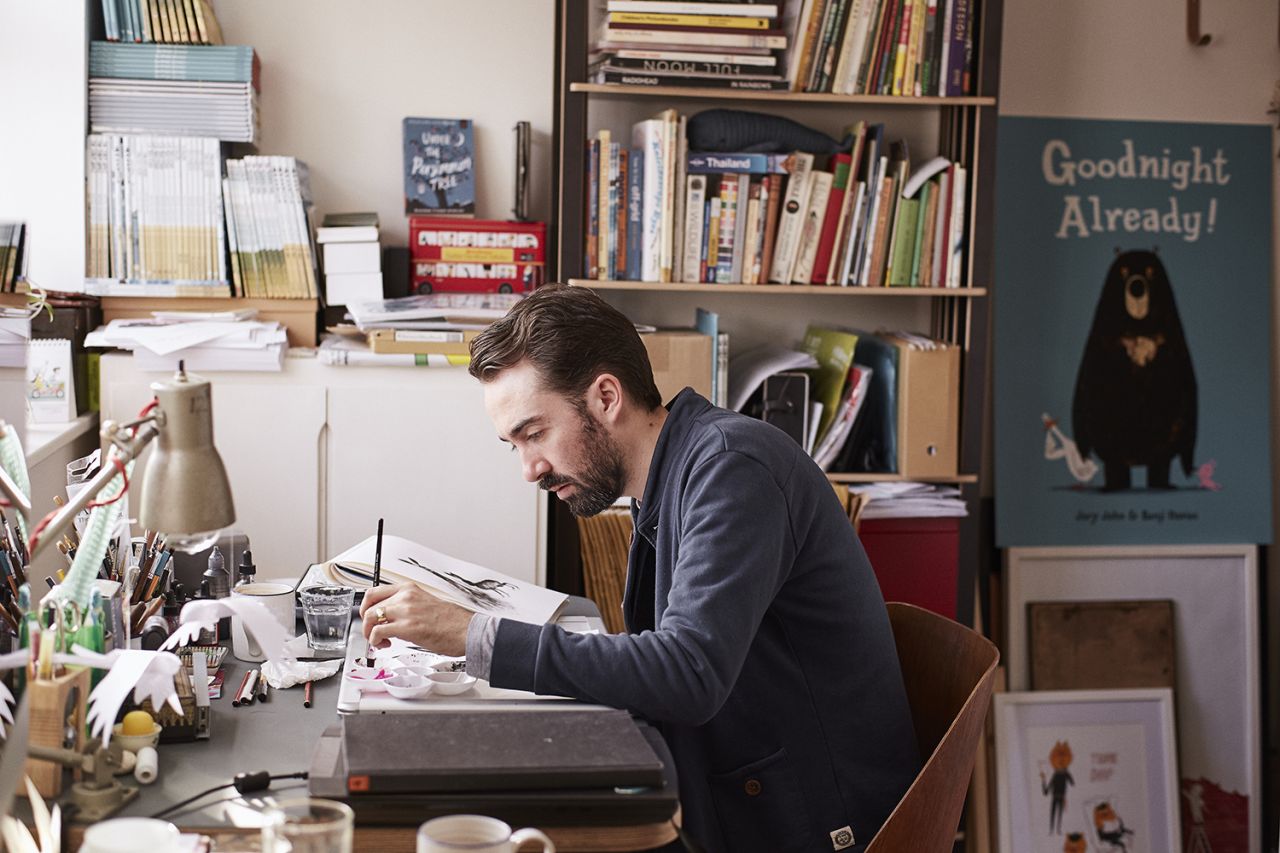
Photography by Jake Green
His first, The Storm Whale, won the inaugural Oscar's Book Prize and was Dutch Picture Book of the Year 2017. His second, called Grandad's Island, won the children's book category of the AOI World Illustration Awards 2015 and was crowned Best Picture Book and overall Children's Book of the Year at the Sainsbury's Children's Book Awards 2015.
Now Benji is back again, this time with The Grotlyn – an intriguing rhyming story full of mystery and wonder. We caught up with the East London creative to find out more.
You have a new book, The Grotlyn. What's it about?
The Grotlyn is a mystery told through the eyes of the children who live in a dusty old city. Things go missing – an oil lamp, a toolbox, some silk handkerchiefs – but nobody knows who or what has taken them.
After The Storm Whale books and Grandad’s Island, it’s my first rhyming picture book. It might feel quite spooky at the start but I urge the reader to carry on and see who The Grotlyn is. Because this book is about finding out that not everything is what we might first assume – that in the dark there is light. It was a lot of fun to write.
Where did the idea for The Grotlyn come from? It's not a name we've heard before!
It's a name that I made up. It just popped into my head one day when I was thinking about this creature who slipped out of the shadows in a grimy Victorian setting. 'The Grotlyn' just seemed to fit. I suppose deconstructed it is a kind of portmanteau of grotty or grotesque and gremlin or goblin. It borrows the sounds from these words and mixes up their meanings to create something new.
The book follows your success with The Storm Whale and Grandad's Island. You write such lovely stories. Where do you get your ideas from?
I find that inspiration is anywhere and everywhere, you just need to be looking out for it. Ideas for my stories strike when I'm least expecting, like when I'm not actually trying to work – on holiday, while walking, travelling... so you have to have your wits about you.
The best thing to do is keep looking and listening all the time and when something interesting catches your attention, something that fires up your imagination, or pleases your eye, you must be ready to jot down a few notes or make a sketch.
Once I have the ingredients, the starting point of a good idea, I find the best thing to do is let it percolate down, let it brew. The best ideas evolve, gathering detail and meaning the longer they sit with me.
Do the illustrations come first, or the words?
My first book as both writer and illustrator was The Storm Whale. I had originally created the story as an animated film while studying animation at university. So I had to set about the process of transforming the film into a picture book.
While they have many similarities as art forms, this was much harder than it might sound. I pulled the film apart as a story then reconstructed it, picking out the right imagery to tell the story within the picture book format. Once I had that framework, I started to add the words to guide the reader through the pictures. Then I changed the pictures, removing some, adding others, then back to edit the words, moving things around – backwards and forwards like that until it made a cohesive whole.
The first thing I tend to do now is, when I have a new idea, to make notes as text. This is a really quick way for me to remember the idea, or maybe even to record down a sentence as I imagine it will appear in a book when I’m on the move. I can then return to these notes at later date and start to develop the drawings and characters and get the right tone for the story.
The notes just fix an idea in my head – they are visual, so it's a picture in my head first of all. Whether I make a note of this as text or a drawing is not important.
Describe the process from idea to concept to finished product
For The Grotlyn, which was also a short animated film I had made, I revisited the process I used for The Storm Whale. It was tricky to get the right balance at first. I wanted to make the book less sinister than the film, to create a tone that was humorous and light whilst playing with this Victorian setting, a Dickensian vibe.
The story is essentially about flipping the darkness on its head, the characters finding out that these mysterious goings-on are not what they seem, that they have a playful, hopeful outcome.
I tried out several versions of the text before I got it just right. I even wrote a version without rhyme, the whole thing in prose. It didn’t have the exciting, bouncing rhythm that the story needed to drive it along, although it did throw up some interesting words and ways of telling the story which I could weave back into the rhyme.
For the characters I channelled my inner Dickens and a smattering of film references from Disney’s Mary Poppins to David Lynch’s The Elephant Man, to get a flavour of characters inhabiting turn-of-the-century London.
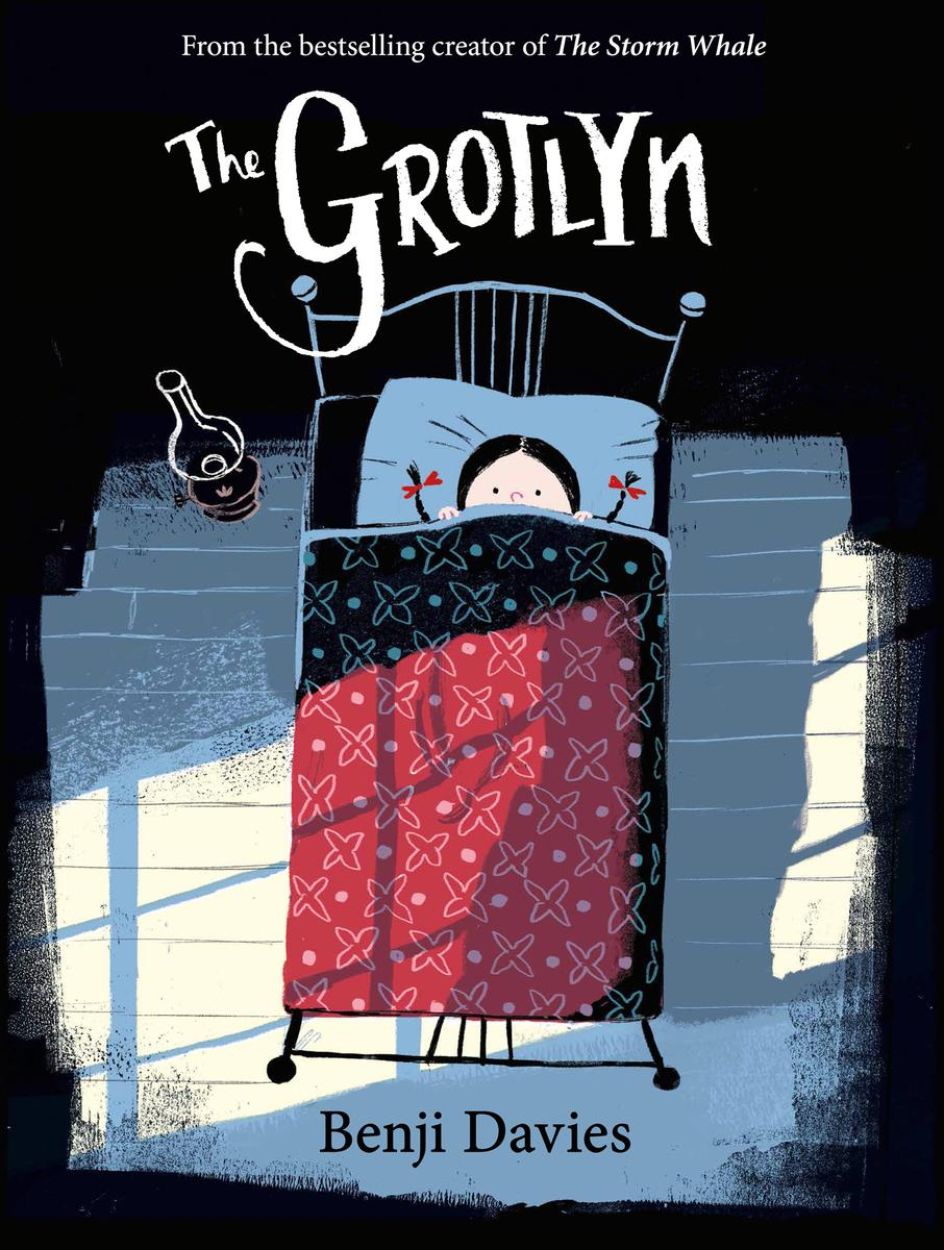
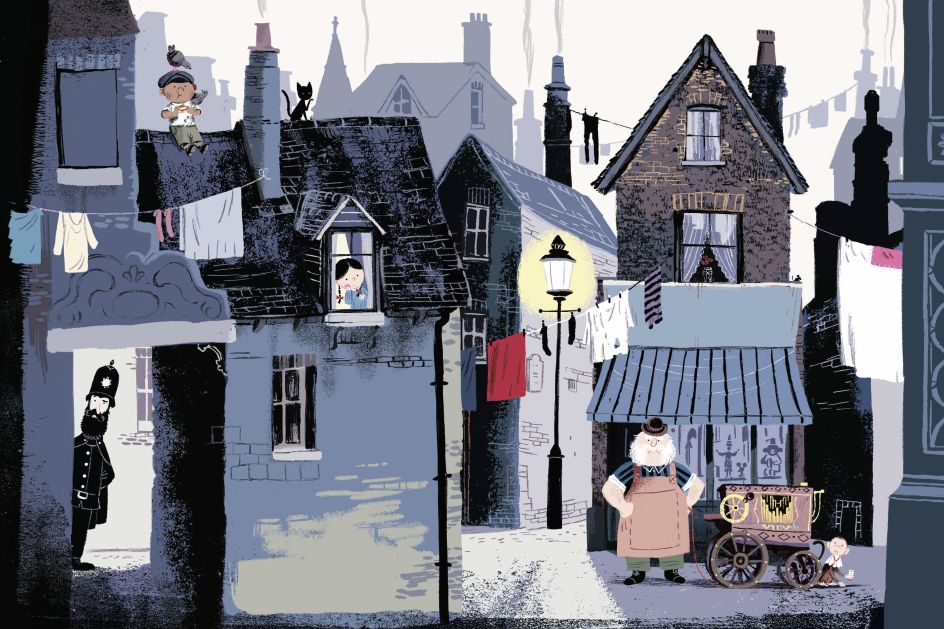
Have any ideas slipped through the net?
I have a few things bubbling away on the back-burner. Some are from past animation projects that I have started but never got to complete for one reason or another. Others are completely new ideas that have been developing in my sketchbooks and in the back of my head. I’m looking forward to getting the chance to put pen to paper again. I think everything works its way through eventually, in one form or another.
Do you test your ideas out on children you know first?
No, never. Some people swear by that method but for me knowing what the children reading my books will respond to, I see that as my job to work out. I was a child once (you may or may not believe!) and so I'm hoping that when I make a new book I am reflecting my own experience of childhood and how I remember feeling and reacting to the world around me.
The stories you write and illustrate are also available as animated trailers. Do you have any plans to further build on this, creating full-blown short films?
There has been some talk! But that’s all I can say for now. I was an animation director for several years, working mainly on commercials and music videos. I’d love to get involved in the world of animation once again, but this time through the stories I have created. Moth has done a fantastic job on The Grotlyn trailer and it would be incredible to see a longer-form piece.
"It’s important to take these influences and then look deeper and make your work your own. Otherwise, you will only ever be a paler version of the work you love."
You've kindly provided tips on your website for others hoping to make it in children's publishing. What would be your top advice?
Like anything, you only get better through practice. I believe there is no such thing as pure talent. You might have an affinity, a seed, an interest in the visual, but you need to build on that. If you couldn’t play the piano, first go, without lessons, would you need more practice to become a concert pianist? My advice would be to draw, draw and draw some more.
You need to develop not so much a style, but an approach that is uniquely yours. Try different tools, let your own ‘handwriting’ develop in your work. You can be influenced by other artists but it’s important to take these influences and then look deeper and make your work your own. Otherwise, you will only ever be a paler version of the work you love.
I would also encourage children’s illustrators to be mindful of the work that is out there but also to look away from the artform. Be interested in all sort of things – music, art, history – and let them influence your work. You will find it becomes richer and more personal because of the way you respond and feed that back into your drawing.
Primarily, draw what you love, then share it with the world.
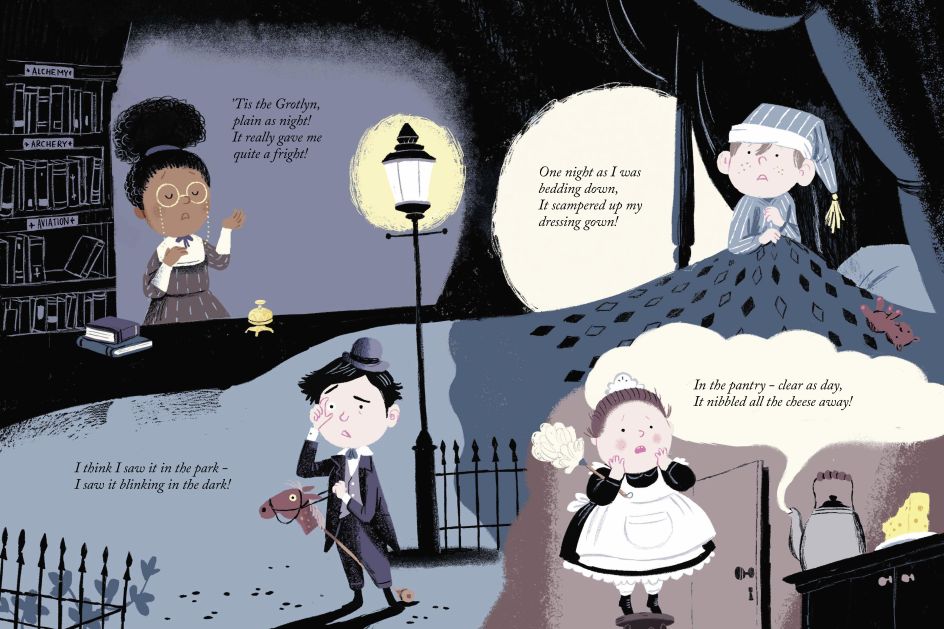
Was it always your intention to write children's books?
I have been interested in writing and drawing since I was very young. I spent several years working as an animation director and then realised that all the things I loved about that – coming up with characters and settings, making them feel like they are living and breathing, telling their stories – could also be done by writing and illustrating children's books.
Dare we ask if you have a favourite book from your childhood?
One of my favourites was Frog And Toad All Year by Arnold Lobel. It’s the ongoing story of a beautiful and life-affirming friendship.
When you read your own stories to children, how do you tell them?
I think that I go into a kind of storytelling mode. I don’t have a big booming delivery, and I don’t see it as a performance. Hopefully the children get drawn into the imagery and I guide them through the story with the words.
Is there a dream narrator you'd love to work with?
Sadly many of my heroes are disappearing. John Hurt would have been great, such a wonderful voice. There are so many great actors I’d love to hear read my books it’s hard to choose. If I had to pick one, it would be Michael Gambon!
Finally, aside from The Grotlyn, what's next for you?
By this time next year I will have finished writing and illustrating two more picture books. I can’t say what they’re about – that would be telling.

















